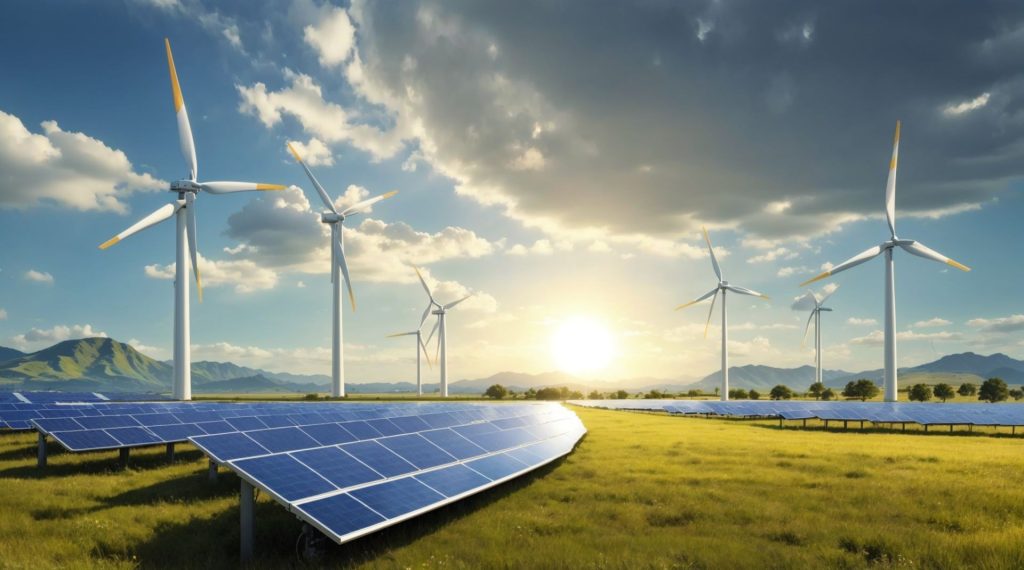How Renewable Energy Investments Are Expanding Globally
Aiden Foster August 20, 2025
In 2025, renewable energy investments are expanding globally at unprecedented speed and scale, driven by record-setting funding, technological breakthroughs, and strategic policy shifts. From floating offshore wind turbines in China to sweeping green hydrogen ambitions in India, this year’s trends reflect real momentum—and offer valuable insights for investors, policymakers, and sustainability advocates.

1. Record-breaking Investment Momentum in Clean Energy
Clean Energy Surges Ahead of Fossil Fuels
The International Energy Agency projects global energy investment to reach about 3.3 trillion dollars in 2025, with roughly 2.2 trillion dollars directed toward renewables, nuclear, storage, and grid technologies—twice the amount going into fossil fuels. Solar continues to dominate, with expected investments of about 450 billion dollars, while battery storage is also gaining attention with more than 60 billion dollars in projected funding.
Investment Scale Across Sectors & Regions
BloombergNEF recorded a new global milestone in 2024: 2.1 trillion dollars spent on energy transition efforts—the largest to date. Deloitte emphasizes that 2025 will be shaped by efforts to close supply-demand gaps in clean energy manufacturing, integrate artificial intelligence into operations, and strengthen global supply chains.
Why It Matters
This level of investment signals a decisive pivot away from fossil fuels. Capital is flowing into cleaner, modular, and more resilient energy systems across the world. For investors, the signal is clear—renewables are now the dominant force in the energy sector.
2. Game-Changing Technologies: Floating Offshore Wind & Green Hydrogen
Floating Offshore Wind: Breaking New Ground
In 2025, China unveiled a floating wind turbine capable of generating 17 megawatts of electricity—enough to power more than 6,000 U.S. households. Standing nearly 500 feet tall with blades extending more than 800 feet, the turbine is designed to withstand typhoon-strength waves and tap into offshore wind potential in deep waters. Experts estimate that about 80% of offshore wind capacity lies in areas too deep for traditional fixed turbines, making floating systems a crucial development.
Why Floating Wind Changes the Game
- Unlocks vast deep-sea areas previously inaccessible
- Requires fewer turbines per site, boosting cost efficiency
- Expands potential for countries with deep coastal waters, such as Japan
Green Hydrogen: India’s Ambitious Bet
India has set a bold goal to capture 10% of global green hydrogen demand by 2030 under its National Green Hydrogen Mission. Already, more than 800,000 tonnes of annual production capacity has been allocated to nearly 20 companies.
Globally, green hydrogen remains costly compared to fossil fuel alternatives, but production costs are declining. Analysts project that green hydrogen could reach cost parity with conventional hydrogen by 2030 in favorable regions.
Why These Techs Matter
Together, these technologies highlight the innovative edge driving renewable expansion. Floating offshore wind opens new frontiers for power generation, while green hydrogen addresses energy storage and industrial decarbonization. Both are pivotal for a sustainable energy future.
3. Regional Momentum: UK, China, India, Africa, and Beyond
United Kingdom: Approvals Skyrocket
In the second quarter of 2025 alone, the United Kingdom approved more than 16 gigawatts of new renewable capacity across hundreds of projects, representing a year-on-year increase of nearly 200%. Battery storage also gained traction, with applications doubling to more than 8 gigawatts. The UK aims to generate 95% of its electricity from carbon-free sources by 2030.
China & India: Giants Pushing Forward
China remains the global leader in renewable investment, accounting for nearly one-third of the total. It has already exceeded its 2030 target for combined solar and wind capacity, reaching more than 1,200 gigawatts.
India is experiencing similar momentum, with renewable output rising by 20% in the first half of 2025. The government aims to achieve 500 gigawatts of non-fossil capacity by 2030, supported by strong domestic and international investment.
Africa: From Underinvestment to Opportunity
Africa historically attracted less than 2% of global renewable investment, far short of its needs. To close this gap, the Accelerated Partnership for Renewables in Africa (APRA), launched at COP28, is working to increase renewable capacity from about 56 gigawatts in 2022 to 300 gigawatts by 2030. This push involves mobilizing international finance and private sector participation.
4. Overarching Trends & Strategic Challenges
Rebalancing Energy Systems
The World Economic Forum’s Energy Transition Index shows system performance improving in 2025 by more than 1%, the fastest recovery in a decade. While equity and sustainability metrics are rising, readiness improvements are lagging. This signals ongoing vulnerabilities in resilience and energy security.
Global Investment Patterns
Clean energy investment now outpaces fossil fuels roughly ten to one. Solar additions alone are expected to hit around 600 gigawatts in 2024, alongside 125 gigawatts of wind and a doubling of grid storage capacity.
Infrastructure Gaps & Equity Issues
The International Energy Agency warns that investment in grid infrastructure—currently about $400 billion annually—lags significantly behind generation funding. This creates a bottleneck, as renewable generation grows faster than the systems needed to deliver it efficiently.
Financing Disparities
Developing countries receive only about 15% of global clean energy investment despite representing two-thirds of the population. To stay aligned with global climate targets, investment must increase from about 270 billion dollars annually today to 870 billion dollars in the early 2030s, and eventually to more than 1.5 trillion dollars.
5. What’s Next: What Readers Should Watch
- Scale of Floating Wind Projects – Will prototypes move into commercial-scale rollout?
- Green Hydrogen Market Maturity – Can costs fall quickly enough to enable industrial adoption?
- Financing for Emerging Economies – Will institutions address the major gaps in Africa and Asia?
- Grid & Storage Infrastructure – Will governments and utilities invest enough to match soaring generation capacity?
- Policy & Permitting Reform – Will more nations follow the UK’s lead in streamlining project approvals?
Conclusion
2025 is shaping up as a pivotal year: renewable energy investments are expanding globally in both scope and speed, powered by record-breaking funding, breakthrough technologies, and regional momentum. From floating offshore wind to green hydrogen, the future of clean energy is being built now. Investors, policymakers, and citizens alike should pay attention—because the decisions made today will define the energy landscape for decades.
References
- Reuters. (2025, June 5). Global energy investment set to hit record 3.3 trillion dollars in 2025, IEA says. Available at: https://www.reuters.com (Accessed: 20 August 2025).
- Live Science. (2025, July 10). China builds record-breaking floating wind turbine—it could change the face of renewable energy. Available at: https://www.livescience.com (Accessed: 20 August 2025).
- The Economic Times. (2025, April 20). India sets eyes on 10% of global green hydrogen demand. Available at: https://economictimes.indiatimes.com (Accessed: 20 August 2025).








